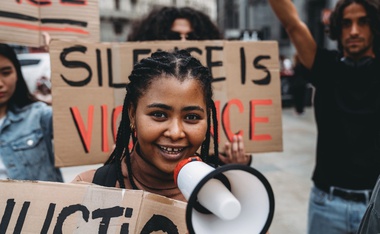In the intricate tapestry of human existence, the thread of justice weaves through our lives, interlocking our destinies and aspirations. Yet, in many societies, this thread frays and tangles under the weight of injustice. Amid the tumult caused by inequality and oppression, the Bahá’í teachings present a compelling call to arms: the doctrine of “Creative Maladjustment.” This concept, echoing the philosophy of notable historical figures such as Martin Luther King Jr., serves as a clarion call for individuals to resist conforming to the status quo when the fabric of morality is compromised. This article delves into this significant teaching, urging a profound reconsideration of our response to systemic injustice.
The Essence of Creative Maladjustment
Creative Maladjustment transcends mere dissent; it encapsulates a transformative approach to injustice. It is not merely a refusal to accept conditions that are fundamentally flawed, but an active engagement in reshaping societal values. The Bahá’í Faith posits that true adherence to justice necessitates an unwavering commitment to moral principles, even when societal norms are unyielding. Just as a malleable artist molds clay, individuals must sculpt their responses to injustice with creativity and courage, challenging the structures that perpetuate discrimination and inequity.
Historical Context
The seeds of Creative Maladjustment can be traced through the annals of history, sown by figures who recognized that compliance with unjust systems often leads to complicity. One of the most ardent advocates of this philosophy was Martin Luther King Jr., whose civil rights activism emerged from a deep understanding of the necessity to confront injustice assertively. His famous declaration that “injustice anywhere is a threat to justice everywhere” resonates profoundly within the Bahá’í framework. This interconnectivity of humanity echoes the Bahá’í principle that the well-being of one is tied to the well-being of all. Through historical lenses, the perseverance against tyranny reveals an unwavering principle: that constructive dissent is not only justified but essential.
Metaphorical Dimensionality
In exploring Creative Maladjustment, one might consider the metaphor of a river. A river flows, seemingly conformed to the landscape it traverses. However, when it encounters insurmountable obstacles—boulders, barriers, or unnatural dams—it does not yield to stagnation. Instead, it carves new paths, reshapes the environment, and finds ways around the impediments. In this metaphor, individuals emboldened by Creative Maladjustment exemplify the river’s resilience. They become agents of change, bending societal structures and refusing to be overwhelmed by the injustices that threaten to dam the flow of human potential and progress.
The Imperative of Resistance
Adherents to the Bahá’í teachings are called to resist unjust norms not only as a matter of personal integrity but as an act of collective responsibility. The imperative to engage in Creative Maladjustment necessitates an awareness of the world’s injustices. This awareness is not passive but requires active reflection and engagement. Becoming a conscientious observer of societal dynamics is the precursor to any meaningful action. Once individuals recognize the transgressions present in their communities, they are beckoned to act—you cannot effectively confront that which you refuse to acknowledge.
Strategies for Creative Maladjustment
Implementing Creative Maladjustment calls for inventive strategies, employing both subtlety and strength in challenging injustices. Active listening emerges as a fundamental strategy. Engaging with those affected by inequality provides insights often obscured by privilege. Cultivating empathy allows for a deeper understanding, laying a foundation for community solidarity against oppression.
Additionally, education serves as a potent tool in this arsenal. Knowledge breeds empowerment. By educating oneself and others about the mechanisms of injustice, individuals dismantle the barriers that perpetuate ignorance and apathy. Furthermore, weaving narratives—be they through art, literature, or activism—can galvanize communities to rally against inequity, fostering a collective desire for transformation.
Balancing Passion with Poise
While the pursuit of justice demands fervor, it equally requires a level of poise. Creative Maladjustment is not synonymous with chaos; rather, it embodies a strategic approach that harmonizes emotion with intellect. When one channels passion into purpose, the outcome is a resolute stance against injustice that resonates deeply, encouraging others to join the cause. This equilibrium between indignation and composure is vital for fostering effective dialogue and enduring change.
The Path Forward
Embracing the tenets of Creative Maladjustment holds profound implications for both personal and collective growth. A society that encourages its members to challenge injustices cultivates an environment of innovation, resilience, and hope. The call to deliberate and creative response rather than passive acceptance offers a unique appeal, empowering individuals to transcend their limitations. While the journey may be fraught with challenges, the ideals of the Bahá’í Faith reinforce that pursuing justice is a commitment to the greater good, aligning personal aspirations with the universal hope for equality and fairness.
In conclusion, as we reflect upon Creative Maladjustment, it becomes clear that the teachings of the Bahá’í Faith summon humanity not to acquiesce to oppression, but to engage with it, transcend barriers, and redefine the moral landscape. In a world rife with challenges, let us heed the wisdom of this call—to embrace creative resistance in our unwavering pursuit of justice.
